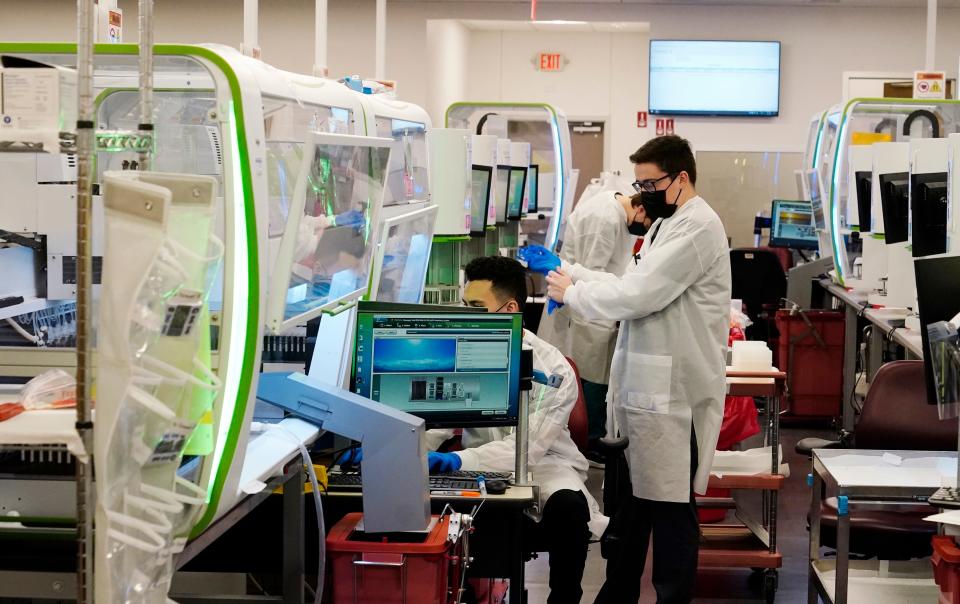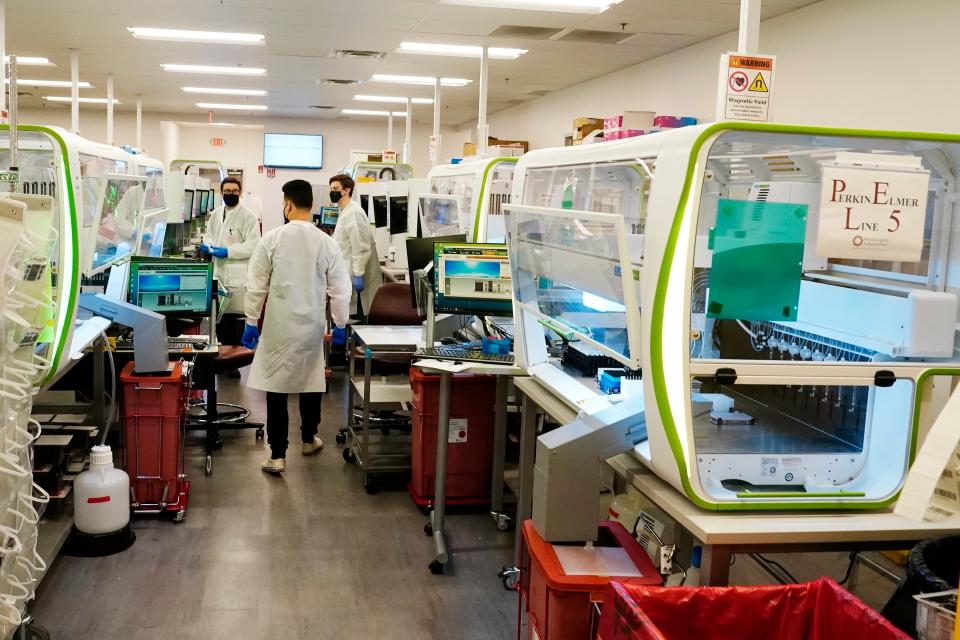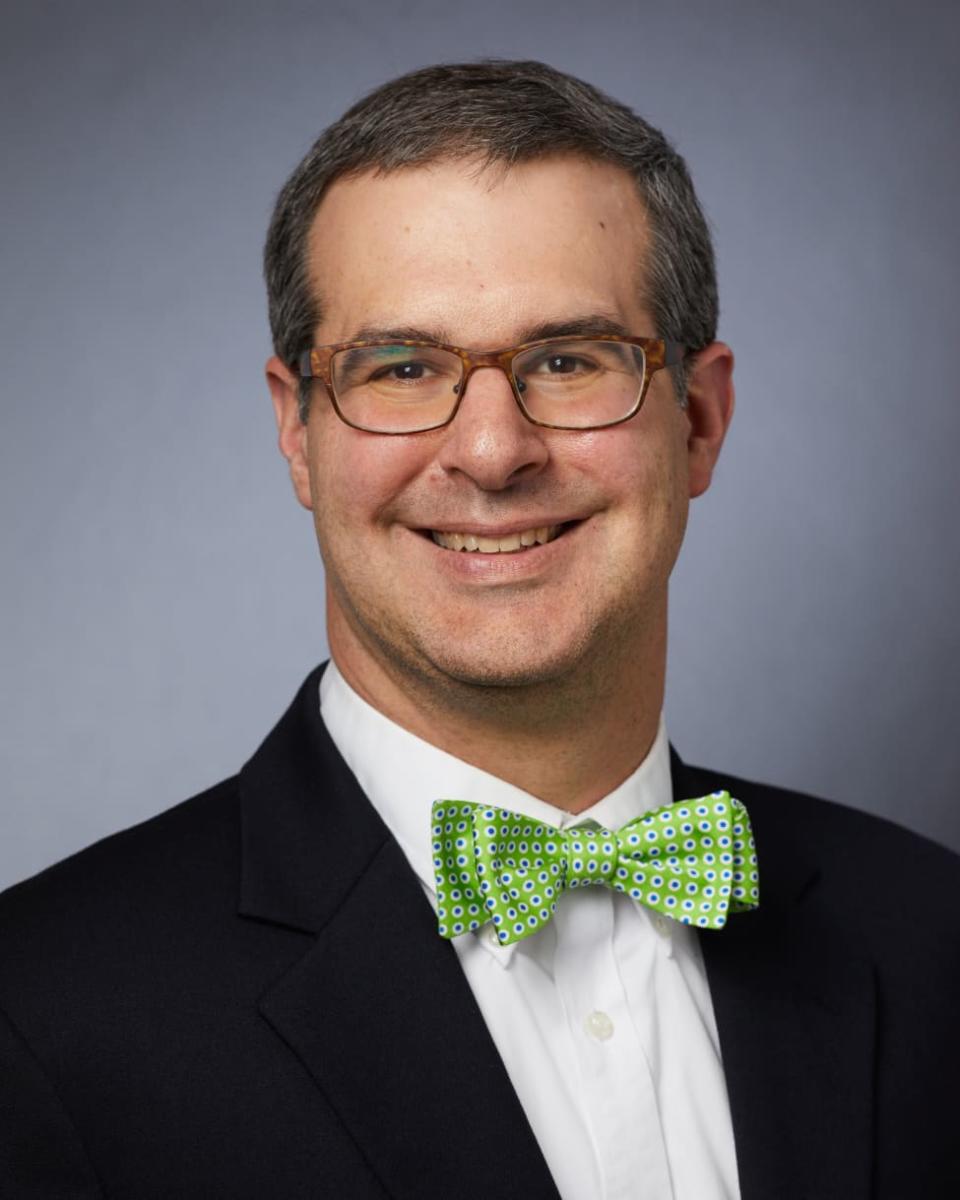As the pandemic crisis exploded, there was chaos in diagnostic testing
The Connecticut State Arsenal and Armory is a pile of granite located a block downhill from the capital in Hartford. When Tom Durant of the Yale School of Medicine arrived in late April 2020, it resembled the set of an action movie just before the aliens invade. Uniformed members of the National Guard loaded boxes of COVID-19 tests onto military trucks. To Durant, it appeared the public health response to the pandemic was well underway.
“I remember walking in and thinking, ‘This looks very much like the set of "Independence Day,' " said Durant, whose labs would perform much of Connecticut’s testing during the pandemic’s first wave.
Then he started asking questions.
How did the state plan to order tests? How would the order form be laid out, such that all the fields could be read by Durant’s computers at Yale? How would electronic orders comply with federal privacy law?

After the lab analysis was complete, would Yale’s laboratory be required to send the results to its competitors, including other hospitals in Hartford? Would results be sent to doctors? To public health agencies? Could results be shared with the Connecticut state agencies? Or did public employee union contracts prevent such sharing?
Surrounded by the echoes of the armory, the public officials fell silent.
“The state testing people were there trying to figure out the analytic part. And we were saying: The analytic part is easy,” Durant said. “It’s the pre-analytic and the post-analytic parts that are hard. How do you order? How do you collect the sample? How do you get the sample to us? And then who do we report to? It’s not easy.”
Eighteen hundred miles away, in a featureless white office building by a highway overpass in Houston, workers at the Harris County Public Health Department were learning what happens when none of those questions has an answer.
To keep pace with the pandemic, contact tracers at the agency needed every patient’s name, contact and demographic information. But the electronic records systems used by doctors and hospitals send just a tiny slice of data to laboratories, said Janet Hamilton, the Council of State and Territorial Epidemiologists' executive director. Most test orders include just enough data to perform the test, like the patient’s name and insurance information, Hamilton said, but no phone number.

Labs are required to send all the patient data they receive to public health agencies. Throughout the pandemic, Hamilton said, Labcorp and Quest have done this job well.
But labs can’t pass along data they never receive.
“Those interfaces could be set up that way” to include data needed by contact tracers, Hamilton said. “But 90% of the time, they’re not.”
When a doctor orders a COVID-19 test, her request travels from her computer into the vast software stack of a hospital records system, Durant said. Then it’s sent to a laboratory, where it travels more layers of software down to the test machine itself. The test is run. Then the patient’s data travels back up the laboratory’s stack, then out to the doctor, the hospital, and the local public health agency, where it hits additional walls of software.
By the time the patient’s record reaches a contact tracer at a public health agency, it’s usually riddled with errors and missing data, said Eric Bakota, the Harris County Public Health Department’s analytics manager. John Smith at 123 State St. might get confused with his cousin John Smith at 456 State St.
“We got a lot of trash data,” Bakota said.
The process moves even more slowly when data connections don't exist.
During the pandemic, public health workers across the country received records as they always had: by fax. Near the windows overlooking the highway overpass in Houston, the Harris County fax machine spat out so much paper, it blanketed the floor, Bakota said. Stacks of paper test results for people who lived in other cities and counties grew to stand waist-high.
“We don’t have time to go fumbling around and possibly violate HIPAA,” the primary federal law protecting patient privacy, said Bakota. “We’re just going to use what’s working already.”
All this data chaos means contact tracers receive the information they need about 10% of the time, Hamilton said. For the other 90%, each investigation starts with a phone call to the doctor who ordered the test, followed by a public records search. This extra work is required simply to find the first patient, never mind all his recent contacts. That work wastes precious hours.
Against a fast-moving pandemic, contact tracers never had a chance.
"When we’re getting millions of records, we’re not necessarily able to spend all that time and energy to try and put all the pieces together," Hamilton said. "We can't protect the health of millions of people if we’re not supported by rapid data systems."
When their computers failed, public health workers applied brute force. Harris County deputized hundreds of workers as contact tracers, Bakota said. To keep social distancing, many people worked in closets.
“Everyone was working 16-hour days. I don’t know why we even went home,” said Scott Jeansonne, who leads Harris County Public Health’s COVID-19 division. “Anytime you see improvement in public heath processes, that’s being fueled by sacrifices of public health staff.”
Barriers: Paperwork, liability and regulation
Kenneth Beckman operates a laboratory that hides in plain sight. The University of Minnesota Genomics Center is inside a campus that sprawls across two city blocks near the western edge of Minneapolis, between the university’s football stadium and a Union Pacific train yard.

In November 2020, Quest Diagnostics or Labcorp — Beckman declines to specify which one — found itself overloaded with samples during a COVID-19 surge. The company’s leaders asked Beckman if his lab could join its network and help balance the load.
Beckman was glad to try. Unlike most academic laboratories, the genomics center lab already had a certificate from the FDA under the Clinical Laboratory Improvement Amendments standards, which Beckman figured would make the integration easier.
It didn’t.
First the university’s computer systems needed to be expanded to handle test orders, results and patient data streaming in from hundreds of testing sites around the country. Such a large overhaul triggered a full-scale state and federal compliance review of laboratory standards and privacy procedures.
“It’s like they had just acquired a new company. Do you have threat insurance? Can you withstand a hospital-grade IT audit? It’s a questionnaire that’s many hundreds of pages long to make sure you can’t be hacked for ransom attacks,” Beckman said. “If you have a HIPAA violation, it’s $1 million per incident. It’s not trivial.”
This back-end work took three months. By the time it was complete, the crisis had resolved itself, not by an increase in testing capacity, but because the surge ended. So the testing giant decided it didn’t need Beckman’s help after all.
“It’s all this paperwork, regulatory, insurance and liability,” Beckman said. “Those are the problems — not being able to run the test.”
Other laboratory directors who tried to scale up for COVID-19 experienced similar obstacles.
“Everyone dramatically underestimates the pre- and the postanalytical challenges,” said David Peaper, leader of Yale University’s primary COVID-19 testing lab.
This article originally appeared on USA TODAY: Quest Diagnostics testing issues got worse as COVID did

